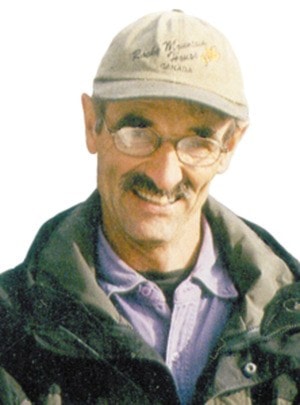Some will say they have all died, but they must be out there somewhere – in one form or another – as they will be back again next summer. Others will say they are hibernating or their eggs are out there. Well, all of the above and more are true of butterflies and also land-dwelling insects in general.
Butterflies, like many other insects, have four stages in their life cycle – egg, larva (caterpillar), chrysalis, (cocoon, for some) and adult. In late fall and winter, butterflies may be found in any stage, depending on the species. The stage in which they spend the winter is pretty much species specific. Surviving the winter in the egg stage is probably more treacherous than in the other stages. In some cases, when summer conditions prevail a little longer than usual, the egg may hatch and the species ultimately hibernate as a larva.
The Lorquin’s Admiral butterfly caterpillar, found in the Kootenays, survives the cold winters by staying sheltered in a rolled up leaf. A little natural “antifreeze” helps. In climes farther east, across the continent, the White Admiral butterfly and the Viceroy (the mimic of the Monarch) in much the same way survive the winter as caterpillars.
Some butterflies spend winter in the chrysalis stage. The most familiar examples are the swallowtail butterflies of which we have three main species - Tiger Swallowtail, Pale Swallowtail and Mountain Swallowtail. Since they are some of our largest butterflies, the chrysalis will also be larger and easier to locate on the sides of buildings, fences or cement walls. The “tiger” often comes out around the time the lilacs bloom. However, like others, some will emerge earlier because they have been in a more sheltered spot. The Mountain Swallowtail is most easily observed May to June on the Goat Mountain Forest Service Road and the upper reaches of the Lady’s Slipper Trail where there are treeless rock outcroppings harboring the Mountain caterpillar’s favorite food -members of the parsley family. There they will fly back and forth or spread their wings to warm up.
Some of my favorite butterflies spend the winter as adults. They are seen on sunny days in late summer and early fall, basking in the last warm sunrays. If they can maintain their body temperature at what we might call room temperature, they will fly around in the daytime, seeking shelter in the late afternoon for overnight, or for the winter. The angle wings and the tortoiseshell butterflies are two indigenous groups whose members frequent in the Kootenay Valleys. Their dormancy in the winter is something less than a true “hibernation”. They can “wake up”, fly around, and go back to their sheltered spot and continue their dormancy.
The Morning Cloak, Compton’s and Milbert’s Tortoise Shell butterflies are fairly common. Sometimes the less common California Tortoise Shell may be observed. The Green Comma, Gray Comma and the Satyr Anglewing (not angel) are members of the anglewings seen regularly. The Painted Lady may not survive local winters however population numbers are often restored through summer migrations from the south. A much less common painted lady butterfly is the West Coast Lady.
Although the hibernating butterflies are usually seen most in the fall and early spring, some of the anglewings and the Mourning Cloak may be seen in mid-summer in the valleys where they are frequently double brooded. Here the early brood becomes the shorter-lived generation while the next brood survives until the next spring.
Finding a chrysalis is probably much easier than finding a hibernating butterfly. The latter comes by being in the right place in the right conditions. An unusually warm fall or winter day may bring one or two to a sunny patch in the yard, orchard or forest. Warming up the cabin may bring them out of the cracks in the walls or out of firewood stacked in the corner. Removing loose bark from a tree or moving a pile of old lumber may expose an apparent life-less from, with legs held close to the body and antenna tucked between the tightly folded wings. If you are privileged to have such an encounter, make some notes and drawings and take some pictures to preserve the memory and put it in a safe place outside.
Ed McMackin is a biologist by profession but a naturalist and hiker by nature. He can be reached at 250-866-5747.
